
Referred to as the first Confederate Cent by historians and numismatists alike, cent-sized tokens issued by a hotel in Alexandria Virginia began appearing in transactions throughout the Commonwealth. Originating from the Marshall House Hotel in 1859, these store card tokens initially were traded in the northern part of the state, but quickly migrated southward to Richmond by the early 1860s.
The token first gained popularity because of the ongoing coinage shortage in the United States during the 1850s. With the outbreak of Civil War, the crisis exacerbated, and virtually all Federal coinage disappeared from circulation.
The general public, anxious about increases in values of all metals due to the War, began hoarding all of their change. First gold and silver coins completely disappeared. But before long, even official copper coinage became extremely scarce. Virtually over night, there were practically no U.S. coins of any denomination being exchanged in general commerce.
Merchants and proprietors found themselves in a difficult situation. Despite the events occurring in the country, businesses and consumers alike still required specie to conduct daily trade. To remedy matters, merchants struck and issued their own private coinages. Ultimately it was these private coinages which found themselves in general circulation. The Marshall House token was but one of many private emissions finding itself in use for such purposes.
Uniquely, the Marshall House Token is attributed as being the first known issue of any metallic storecard featuring the French Minerva head. Designed by Robert Lovett, Jr, a prominent engraver of the time, the Minerva head it features is the exact device as to what appears on Lovett’s later CSA cent prototype.
 And this is why the Marshall House token is referred to as the first Confederate Cent. In fact, it is described as being the very first prototype for the South’s planned Confederate Cent.
And this is why the Marshall House token is referred to as the first Confederate Cent. In fact, it is described as being the very first prototype for the South’s planned Confederate Cent.
Infamously, the Marshall House also became well known during the Civil War era for a more ominous reason. After the city of Alexandria was captured by Union forces in 1861, the owner of the Marshall House Hotel continued to fly the Confederate flag over his hotel.
The owner, James William Jackson, was a captain of a Confederate artillery company in Alexandria, and relished the idea that Lincoln himself could see his flag flying from his vantage point at the Whitehouse†.
While making his way through Alexandria, Union Colonel Ephraham E. Ellsworth espied Jackson’s flag still flying, and decided to take the flag as a trophy. Accompanied by several of his men, Ellsworth entered Jackson’s hotel and negotiated his way to the top floor.
Finding a trap door, Ellsworth climbed his way onto the roof and snatched the flag. While making his way back down, Ellsworth found himself face to face with Jackson, who was holding a double-barreled shotgun‡.
“Here is my trophy,” exclaimed Ellsworth, displaying the flag on his arm. “And you are mine,” replied Jackson, as he quickly raised his gun, and discharged its contents into the breast of the exultant Federal.”
Immediately thereafter, one of Ellsworth’s soldiers fired on Jackson, and mortally wounded him with a bullet to the head.

While collapsing to the floor, another soldier rammed a bayonet into Jackson’s chest. One of the soldiers, Private Brownell, later received The Medal of Honor in 1877 for his act of firing on Jackson.
Conversely, while Brownell was honored by the Union, Jackson himself was honored by the South. Pursuant to a Virginia Verdict of a Coroners Jury, Jackson was “killed while defending his property and personal rights”, and deemed a Martyr to the Cause of Southern Independence.
For nearly 90 years thereafter the building of the Marshall House Hotel remained standing. Despite changing ownership and business names, the building wasn’t torn down until the 1950s when it was razed to make way for redevelopment along Alexandria’s King Street.
Numismatic Specimens
Below are four Marshall House specimens, cataloged as Miller VA-103. They are pictured in order of grade.
The first example below is Choice Fine in grade. As is noted in Rulau, the last digit of the year “9” is quite weak.

The second example below is Choice Very Fine in grade. Despite it having a planchet clip, the “9” in the year is more apparent.

The third example below is Extra Fine in grade. While the “9” in the date is weaker than the example above, the remainder of the specimen possesses much sharper details.

The fourth token below is Choice About Uncirculated in grade. Even in this example, the “9” is still weaker than the other three digits of the year. In this example, among other devices, the specimen’s rims are much more clearly defined.

Aaron Packard ![]()
Notes and Sources
† The Marshall House Hotel is approximately 6 ½ miles from the Whitehouse.
‡ A similar, but conflicting account of events is told in Rulau’s Fourth Edition. The account cited herein was written in 1866⁴, only a few years after the event.
-
“The Marshall House and the Civil War,” The Virginia Numismatist, Winter 2003, pg.15
-
The Lovett Cent; A Confederate Story, Harold Levi and George Corell, Skeenah Gap Publishing, ©2006, pg.103
-
Ibid., pg.105
-
The Lost Cause; A New Southern History of the War of the Confederates, Edward A. Pollard, Treat & Co, 1866, pg.135
-
Google Earth; The Marshall House was located on the corner of South Pitt and King Street in Alexandria, VA
-
Standard Catalog of United States Tokens 1700-1900 Fourth Edition, Russell Rulau, Krause Publications, ©2004, pg.403
-
Plaque erected and displayed at the former site of the Marshall House Hotel
- New York’s Crystal Palace & The H.B. West Tokens - November 6, 2019
- Edward Aschermann’s Cigar & Tobacco Tokens - November 2, 2019
- George T. Hussey & His Special Message Tokens - October 30, 2019

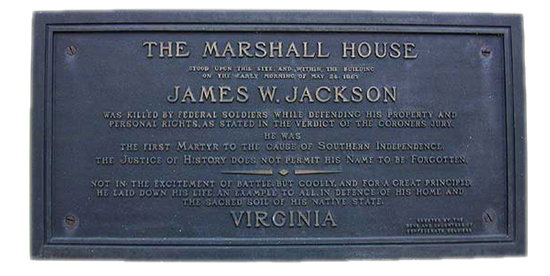
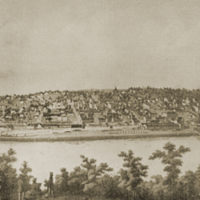
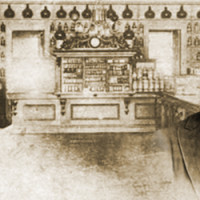
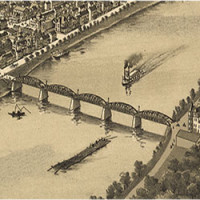
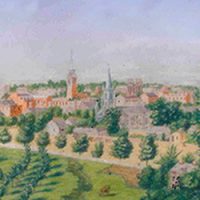

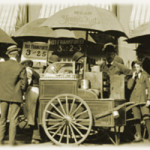
Excellent article! We are linking to this particularly great content on our website. Keep up the good writing
I was just given one of these tokens by my grand mother. I was trying to find any info on it and this was just what I needed .
I rcall a comemorative pitcher that has been in my family depicting the death of Ellsworth – any information would be helpful’
Hi Tom –
Unfortunately I don’t have any information about commemorative pitchers.